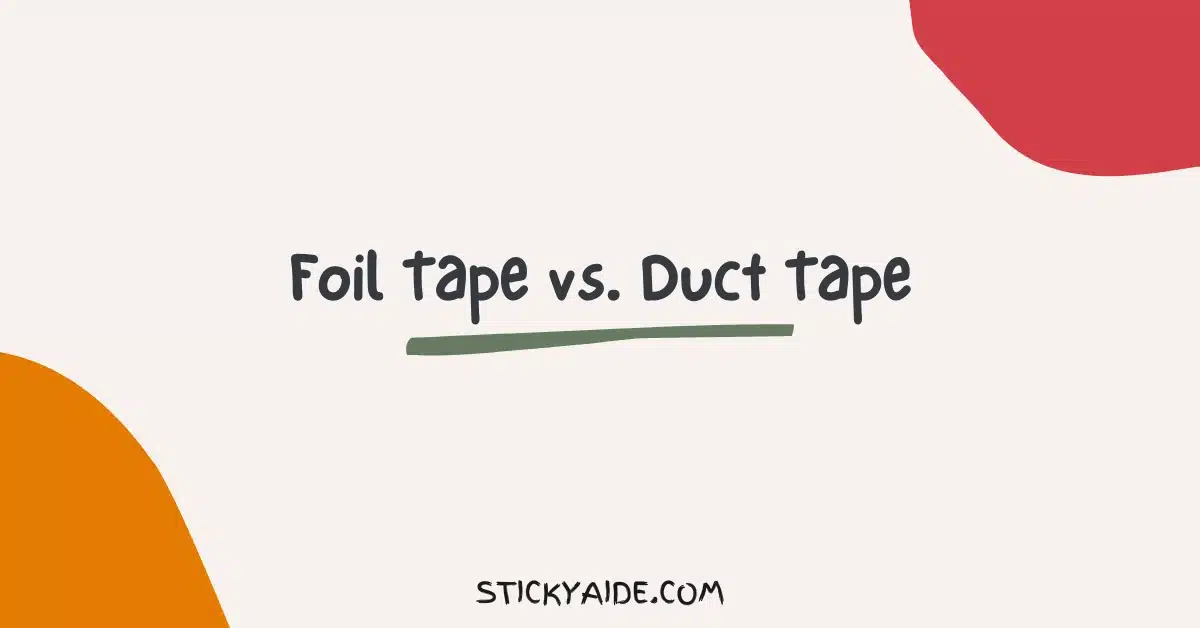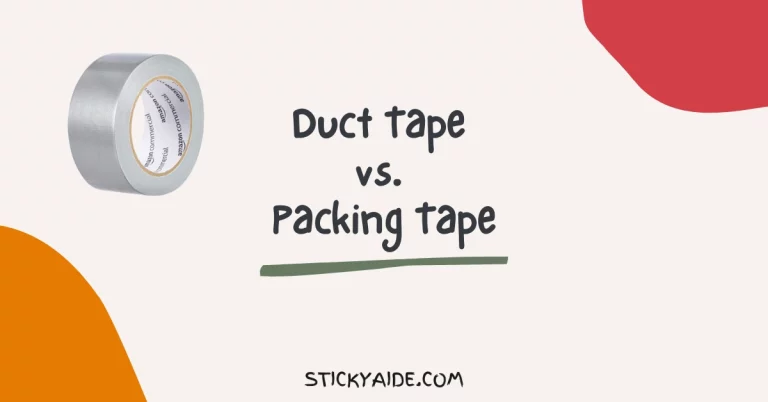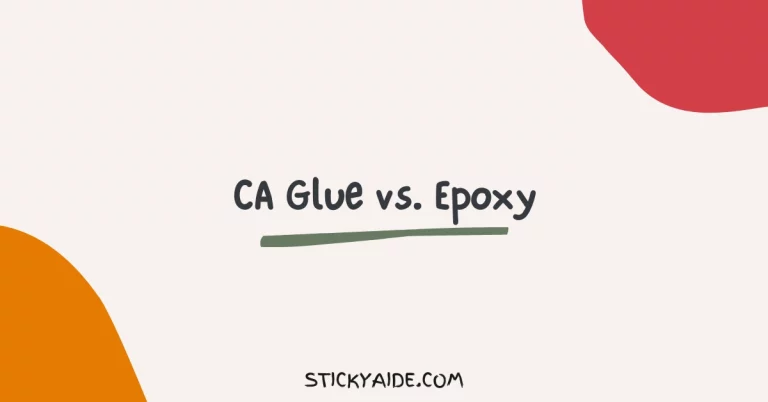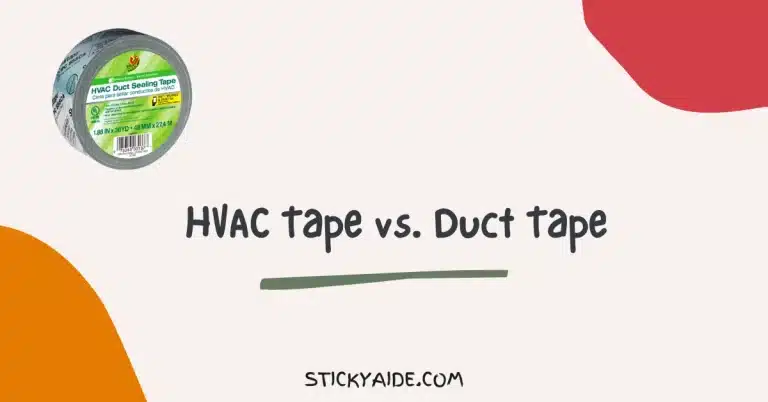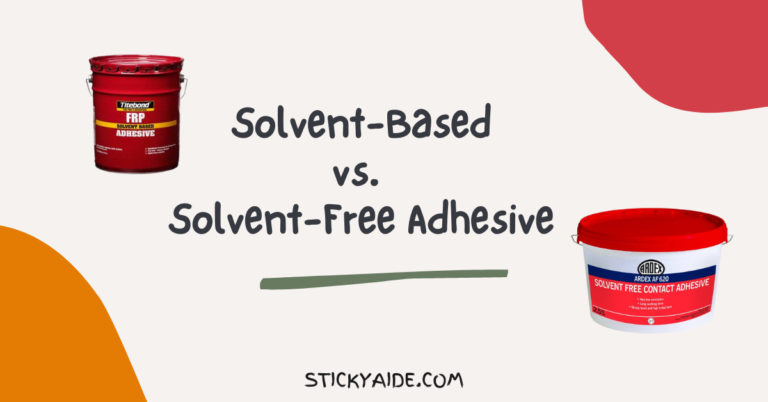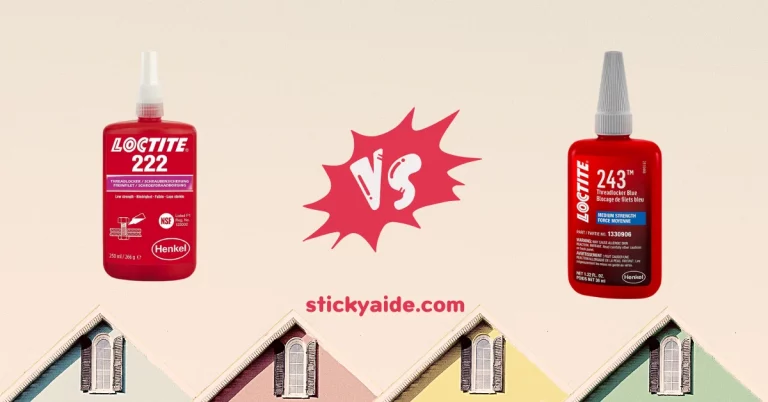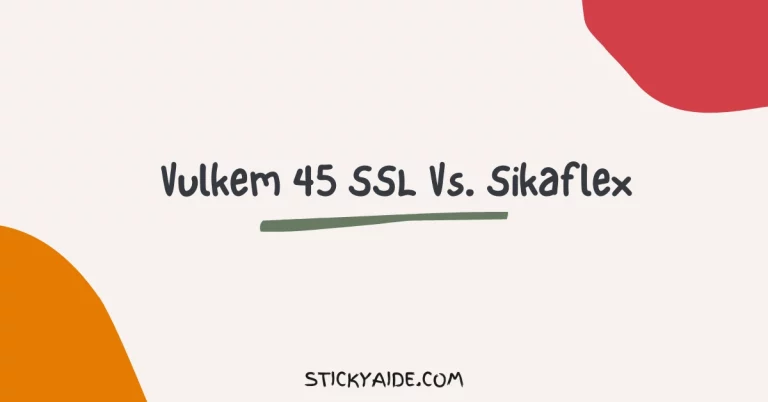Foil tape and duct tape are the two most common types of tape in the market. However, do you know what their purposes are? Or which one would be the best choice for your significant need?
Well, you must know that foil tape and duct tapes are very different from each other with different characteristics.
I have discussed Foil Tape vs. Duct Tape in detail below so that you know their differences and can find out easily which you need for your particular need.
You will get to know about all the major differences and can easily find out your best pick.
Read More: HVAC Tape vs. Duct Tape
What Is Foil Tape?
Foil tape is a type of adhesive tape that is made with a thin layer of aluminum foil that acts as a backing material for the tape. This backing material is coated with adhesive on one side to provide strong sticking capabilities.
Because aluminum is typically extremely strong and has a good resistance to heat, this tape not only sticks to the surface perfectly but also doesn’t get damaged by high heat.
Also, as it provides strong adhesion and ensures durability, this foil tape is used in different industries like metal finishing, automotive, aerospace, and appliances
What Is Duct Tape?
Duct tape, also known as duck tape, is a type of adhesive tape that is made with cloth or fabric and has a backing with a rubber-based material to provide strong adhesion power.
As it is made with fabric yet has a strong sticking capability, this tape has incredible tensile strength and doesn’t get damaged or tear under stress
Moreover, because of its fabric construction, you can tear this tape by hand for incredibly easy and convenient usage.
One interesting thing about duct tape is that it comes in colors, patterns, and strengths to suit your various needs.
Read More: Duct Tape vs. Gaffer Tape
Foil Tape vs. Duct Tape
Here is the summary of all the differences between foil tape and duct tape for a quick glance.
| Properties | Foil Tape | Duct Tape |
| Made From | Aluminum foil | Fabric (usually cloth or woven plastic) |
| Uses | Metal finishing, automotive, aerospace, and appliances | Temporary household repairs |
| Adhesive Type | Strong acrylic adhesive | Rubber-based adhesive |
| Temperature Resistance | High | Low |
| Reflectivity | Reflective | Not Reflective |
| Price | Comparatively Lower | Comparatively Higher |
Differences Between Foil Take And Duct Tape
I have discussed all the differences between foil tape and duct tape so that you learn more about them and understand how they differ from each other.
Made From
From the name of both tapes, it is clear that they are made from different types of materials.
For instance, foil tape is made from a thin aluminum foil and a backing coated with an acrylic adhesive.
While the shiny foil provides heat resistance, reflectivity, and moisture resistance, the adhesive ensures stronger sticking power. It will stick to the surface no matter what the condition is.
On the other hand, duct tape features fabric or cloth construction with a backing coated with a strong, rubber-based adhesive. While the fabric gives this tape strength and durability, the adhesive makes sure it sticks to the surface perfectly.
Uses
Because foil tape offers incredible stickiness and is heat and water-resistant, this tape is mainly used for industrial purposes.
Foil tape is commonly used in HVAC (Heating, Ventilation, and Air Conditioning) systems. However, you can also use it on metal finishing, automotive, aerospace, and appliances.
The same cannot be said about duct tape. This tape is widely used for temporary household repairs like bundling, sealing boxes, emergency fixes, arts and crafts, and other general purposes.
Temperature Resistance
Foil tape provides incredible temperature resistance to the surface. As it is heat-resistant and can withstand higher temperatures, it doesn’t get easily damaged due to an increase in the temperature level.
However, because duct tape is made of fabric, it has low-temperature resistance and might burn in high heat.
Read More: Scotch Tape vs. Duct Tape
What are the main differences between foil tape and duct tape?
Composition: Foil tape is typically made from aluminum foil, which gives it heat-resistant properties. Duct tape, on the other hand, is made from a cloth or fabric backing with adhesive on one side.
Usage: Foil tape is often used for sealing, patching, and insulating HVAC systems due to its heat and moisture resistance. Duct tape is commonly employed for quick fixes, bundling, and temporary repairs.
Adhesive Strength: Foil tape usually has a stronger adhesive designed for long-lasting adherence, especially in high-temperature environments. Duct tape’s adhesive is generally less aggressive and can leave residue over time.
Can I use foil tape and duct tape interchangeably?
While both tapes have adhesive properties, they are designed for different purposes. Foil tape is better suited for situations where heat resistance and moisture sealing are crucial, such as HVAC applications.
Duct tape may not hold up well in high-temperature environments and is better for non-critical, temporary uses.
When should I choose foil tape over duct tape?
HVAC Systems: Foil tape is an excellent choice for sealing joints and seams in HVAC ductwork due to its ability to withstand heat and prevent air leaks.
Insulation: When you need to secure insulation materials in areas with potential temperature fluctuations, foil tape’s thermal resistance makes it a more suitable option than duct tape.
Outdoor Use: Foil tape’s weather-resistant properties make it preferable for outdoor applications where exposure to elements is a concern.
Last Opinion
Here is everything you need to know about Foil Tape vs. Duct Tape, and I am sure that you have learned a lot about these adhesive tapes today.
As both foil tape and duct tape are made using different types of materials and have different adhesive types, they have very distinctive characteristics.
You should buy the one considering your needs rather than the sticking capabilities and the price.

